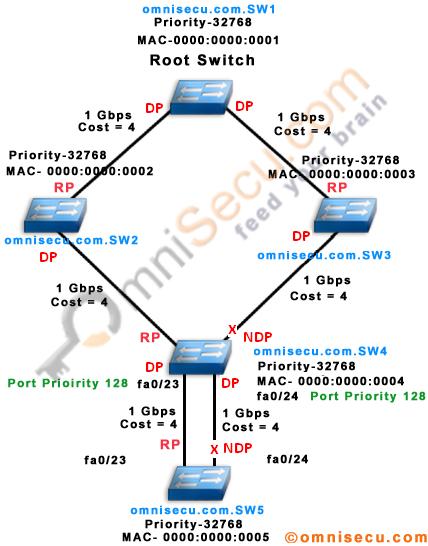Difference between Root Port and Designated Port
Following figure shows a network with four Switches. The Root Bridge (Root Switch) (omnisecu.com.SW1), Spanning Tree Root Ports ("RP"), Spanning Tree Designated Ports ("DP") and a Non Designated Port ("NDP") are marked on the figure.

The differences between Root Port and Designated Port are listed below.
• Root Port is a single selected port on a Switch, other than Root Switch, with least Path Cost to reach the Root Bridge. The Designated Port is the port that has the lowest Spanning Tree Path Cost on a particular Local Area Network (LAN) segment.
The Root Port is the port on the Bridge (Switch) with the least Spanning Tree Path Cost from the switch to the Root Bridge. A Designated Port is the port on a Local Area Network (LAN) segment with the least Spanning Tree Path Cost to the Root Bridge (Root Switch).
• There can be ONLY one Root Port on a Bridge (Switch). There may be multiple Designated Ports on a Bridge (Switch).
All the ports on a Root Bridge (Root Switch) are Designated Port and there is no Root Port on a Root Bridge (Root Switch).
• A Root Port can NEVER be a Designated Port.
• If one end of a Local Area Network (LAN) segment is a Designated Port, other end is called as Non Designated Port (marked as NDP), if it is NOT a Root Port. Non Designated Port will be always in Blocking State, to avoid Layer 2 Switching loops.